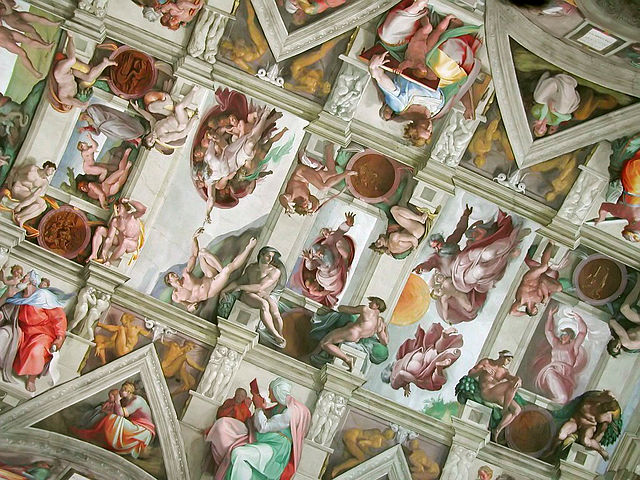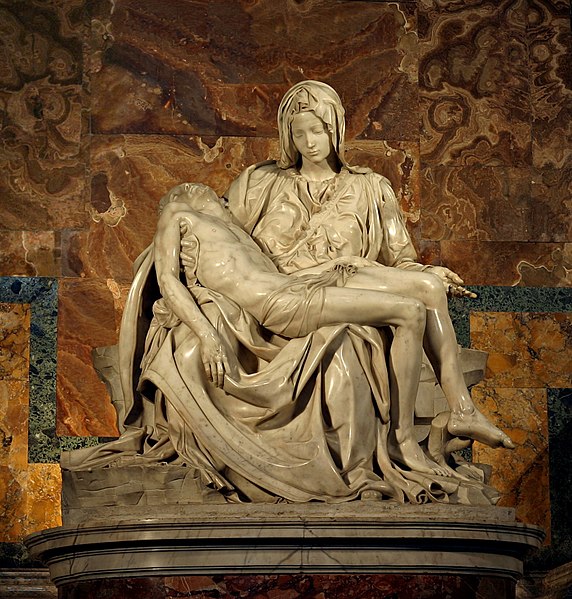The Doni Tondo or Doni Madonna is the only finished panel painting by the mature Michelangelo to survive. Now in the Uffizi in Florence, Italy, and still in its original frame, the Doni Tondo was probably commissioned by Agnolo Doni to commemorate his marriage to Maddalena Strozzi, the daughter of a powerful Tuscan family. The painting is in the form of a tondo, meaning in Italian 'round', a shape which is frequently associated during the Renaissance with domestic ideas.
Doni Tondo
Evidence of Michelangelo's painting style is seen in the Doni Tondo. His work on the image foreshadows his technique in the Sistine Chapel.
The Doni Tondo was influenced by an early version of Leonardo da Vinci's The Virgin and Child with St. Anne. This is the completed version, painted in 1510.
The nude figures in the tondo background are said to have been influenced by the statue of Laocoön and His Sons, found in Rome in 1506, therefore dating Michelangelo's picture later than that date.
Michelangelo di Lodovico Buonarroti Simoni, known mononymously as Michelangelo, was an Italian sculptor, painter, architect, and poet of the High Renaissance. Born in the Republic of Florence, his work was inspired by models from classical antiquity and had a lasting influence on Western art. Michelangelo's creative abilities and mastery in a range of artistic arenas define him as an archetypal Renaissance man, along with his rival and elder contemporary, Leonardo da Vinci. Given the sheer volume of surviving correspondence, sketches, and reminiscences, Michelangelo is one of the best-documented artists of the 16th century. He was lauded by contemporary biographers as the most accomplished artist of his era.
Portrait by Daniele da Volterra, c. 1545
The Madonna of the Stairs (1490–1492), Michelangelo's earliest known work in marble
Pietà, St Peter's Basilica (1498–1499)
David, completed by Michelangelo in 1504, is one of the most renowned works of the Renaissance.








